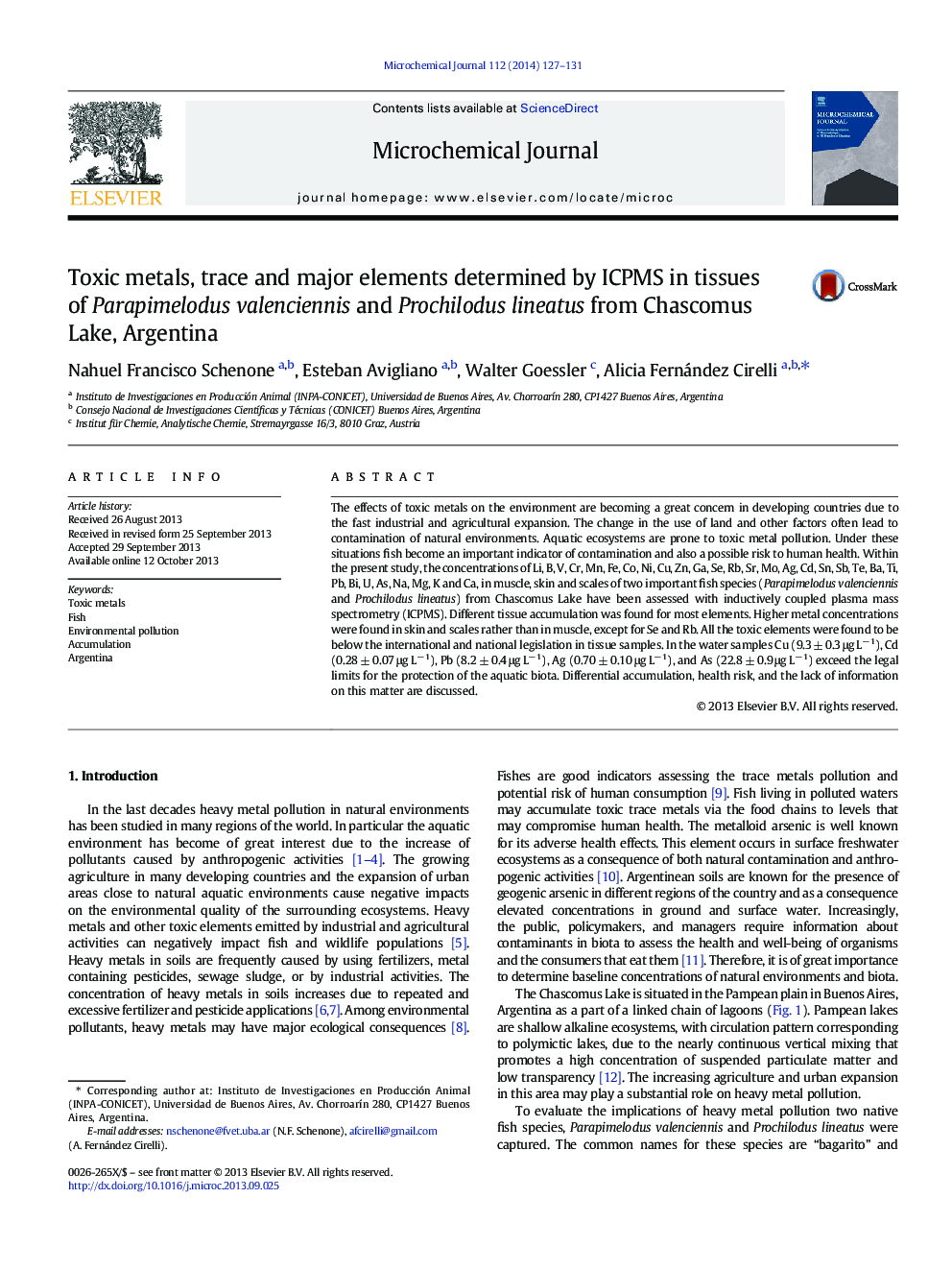| Article ID | Journal | Published Year | Pages | File Type |
|---|---|---|---|---|
| 7643397 | Microchemical Journal | 2014 | 5 Pages |
Abstract
The effects of toxic metals on the environment are becoming a great concern in developing countries due to the fast industrial and agricultural expansion. The change in the use of land and other factors often lead to contamination of natural environments. Aquatic ecosystems are prone to toxic metal pollution. Under these situations fish become an important indicator of contamination and also a possible risk to human health. Within the present study, the concentrations of Li, B, V, Cr, Mn, Fe, Co, Ni, Cu, Zn, Ga, Se, Rb, Sr, Mo, Ag, Cd, Sn, Sb, Te, Ba, Ti, Pb, Bi, U, As, Na, Mg, K and Ca, in muscle, skin and scales of two important fish species (Parapimelodus valenciennis and Prochilodus lineatus) from Chascomus Lake have been assessed with inductively coupled plasma mass spectrometry (ICPMS). Different tissue accumulation was found for most elements. Higher metal concentrations were found in skin and scales rather than in muscle, except for Se and Rb. All the toxic elements were found to be below the international and national legislation in tissue samples. In the water samples Cu (9.3 ± 0.3 μg Lâ 1), Cd (0.28 ± 0.07 μg Lâ 1), Pb (8.2 ± 0.4 μg Lâ 1), Ag (0.70 ± 0.10 μg Lâ 1), and As (22.8 ± 0.9 μg Lâ 1) exceed the legal limits for the protection of the aquatic biota. Differential accumulation, health risk, and the lack of information on this matter are discussed.
Related Topics
Physical Sciences and Engineering
Chemistry
Analytical Chemistry
Authors
Nahuel Francisco Schenone, Esteban Avigliano, Walter Goessler, Alicia Fernández Cirelli,
